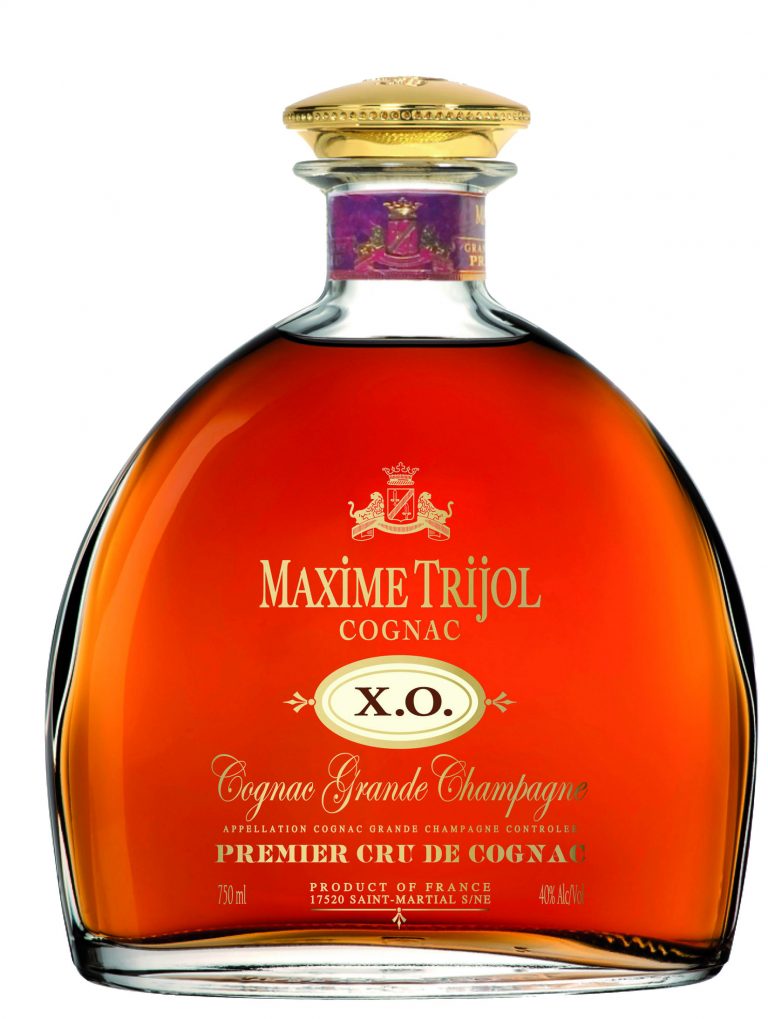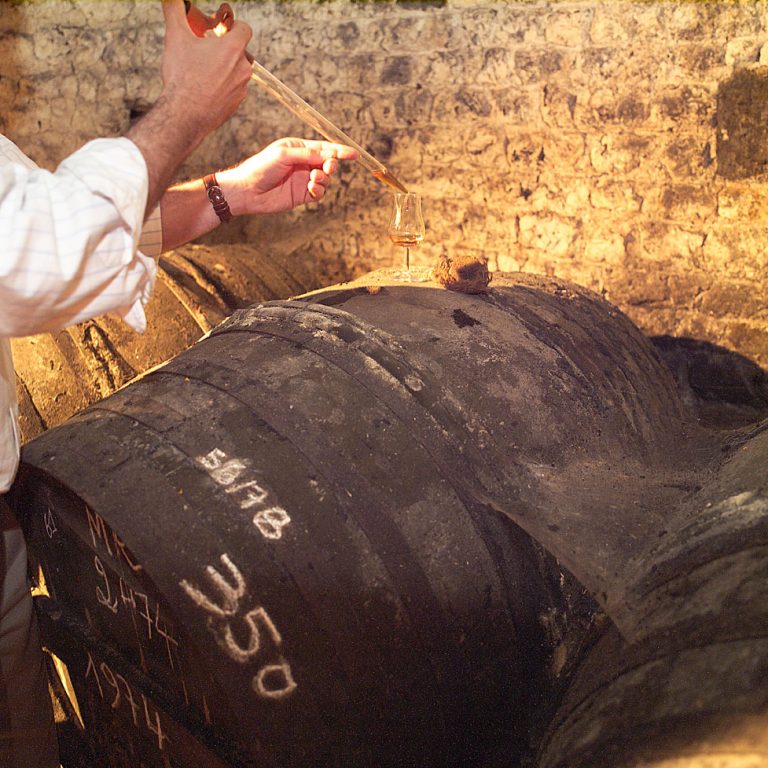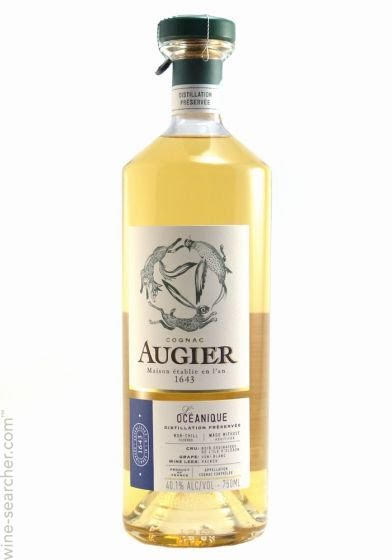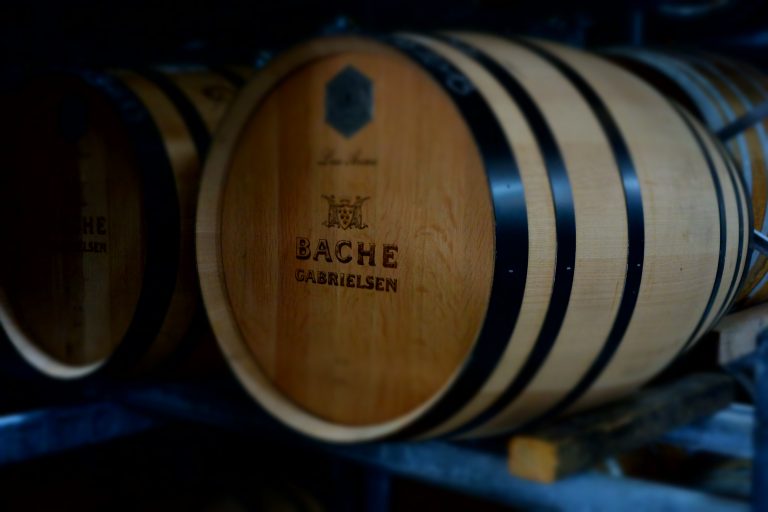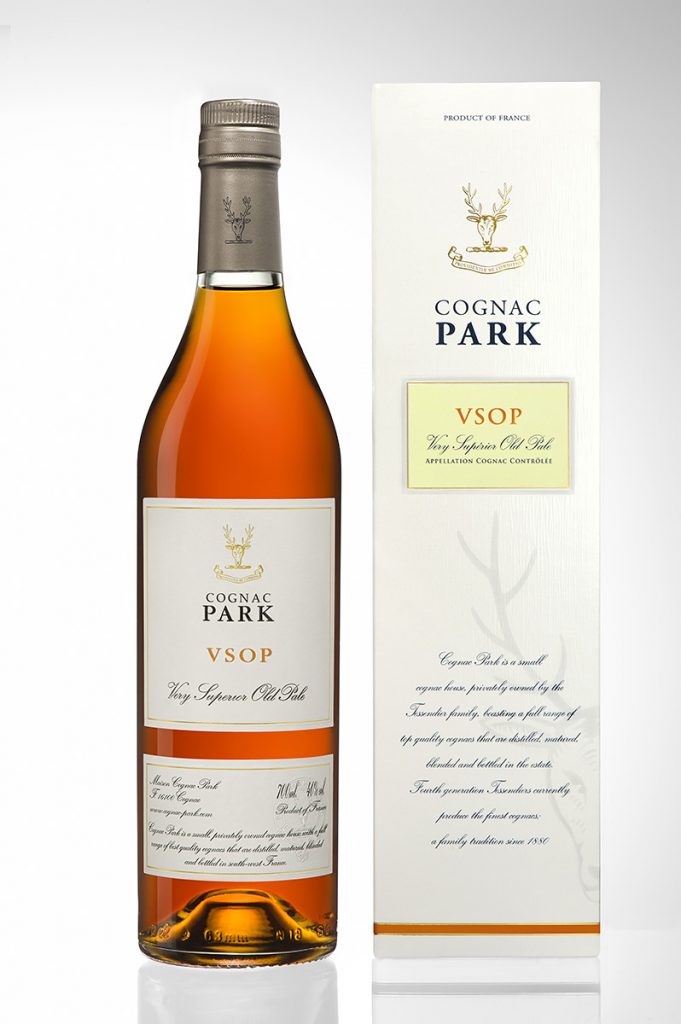Different Sides to the Cognac Story
We cradle our glasses of Cognac punch as the lights dim and images of vineyards, barriques, colorful bottles of liquid and Charentais stills flash before us on the screens surrounding us. We are led into a room where we are surrounded by more screens flashing more vineyard scenes, this time the vines are shown in closeup, and we view them through artfully isolated rainstorms splashing onto two rows of “plots,” which represent freshly planted soil. Another room offers a simulated cellar that smells convincingly of old oak and aging brandy. Finally there is a guided tasting of VSOP and XO, followed by more cocktails in a swank modern lounge setting as trays of hors d’oeuvres are passed around. Camper English is even at the bar presenting one of his infamous ice demonstrations. This is Le Grand Voyage, an “immersive” sipping experience from Hennessy Cognac in Industry City, Brooklyn, far removed from the vineyards and cellars in France it represents. The purpose is to share a unique Cognac experience with consumers who might have some familiarity with the brand, but are for the most part new to the category of Cognac. As one of the largest selling Cognac houses, this well art-directed experience is something they can afford to pull off. According to a recent Shanken News Daily article by Shane English, Hennessy accounts for more than 68% of the category’s volume, with nearly 3.7 million cases sold in the past year.
What about the smaller producers? How do the little companies with no budgets for simulated rainstorms, flying in an ice expert, let alone passing trays of hors d’oeuvres, make themselves stand out in a world in which more choices are available to consumers than ever before?
Steeped in Tradition
Consider that this is an industry hundreds of years old. Cognac estates both large and small have been producing it very much in the same way for centuries. There is a strict set of rules that defines Cognac as a spirit determining where the grapes are grown, how they are processed, what type of wood they are aged in and for how long. There’s not much room for innovation since these rules aren’t going to change any time soon, if ever, but there are subtle ways a Cognac can show some creativity. As Nicolas Palazzi, founder of PM Spirits and importer of several independent Cognac brands puts it, “When you are a renegade in Cognac you are not pushing big boundaries. You do little things that would be normal in any other [spirits] area that would have less history.”
Not that there is anything wrong with tradition. Family producers such as Maxime Trijol produce Cognac that has consistently won awards in numerous competitions, including top ranks in the NY International Spirits Competition. They definitely fit into the Don’t-Fix-What-Ain’t-Broke part of the industry. However, because the category is so vast and largely trapped in its association with luxury and smoking jackets, producers who want to stand out must be very creative. A spokesperson from BNIC (Bureau Interprofessionnel de Cognac) states, “Family houses and large houses while attached to their traditions, are aware of the current consumption trends. For instance some houses are creating Cognac specifically designed for cocktails; others are teaming up with influencers to reach new audiences. The question for the whole category is how to find a balance between respect for the rules and possibilities for development among all its players.”
Bending the Rules
Even a small detail, such as hand-harvesting the grapes, a meticulous method used by revered boutique producer Jacky Navarre as a conscious push against what has become the mechanization of the industry, is seen as a means of self-expression. Though, as Palazzi, who imports Navarre Cognac points out, this creativity comes with some measure of risk, and not just because the experiments could fail. A majority of small producers can only survive in the industry by making eaux-de-vie that is then sold to large corporate Cognac estates to use in their blends. Explains Palazzi, “When you say ‘think outside the box’ in Cognac, people need to understand that in Cognac, everyone is in the box! They’ve been in the box for generations. There are a few companies who even own the box. And they tried as hard as they can to make sure people stay in the box for huge economical interests. If you shake the system too much, you are maybe making your fixed costs by selling some of the booze to big houses, and on the side you might be doing cool stuff. But if the cool stuff you are doing becomes a little too successful you create the risk of shaking things up and someone will come to you and say, ‘Hey, let us know if you want to keep making cool stuff and cover expenses by selling 60% of what you do to us, or just sell only the cool stuff.’
According to the BNIC, “The idea of craftsmanship is integral to Cognac: its roots in terroir, authenticity and know-how are values that consumers desire.” There are producers, also known as bouiller de cru (bouiller means “boiler” or in this case “distiller” and cru referring to the crus, the six regions of Cognac) who take that risk, and they are not necessarily new on the scene either. Augier is one of the oldest producers in the entire region, established in 1643. In recent years, they have reinvented themselves by focusing on grape varietals and terroir rather than age statements (VS, VSOP, XO, etc.) to distinguish their eaux-de-vie. Le Singulier is made entirely of folle blanche grapes, a rare choice, grown in the Fine Champagne region. Le Sauvage is made from ugni blanc harvested solely from Petite Champagne (both won silver in the 2015 NY International Spirits Competition). L’Océanique is made from grapes grown on Île d’Oléron in Bois Ordinaires, which is not only one of the smallest of the Cognac regions, but also sees the most maritime influences. One can actually taste the a hint of sea salt in this expressive brandy. Similarly, Camus Ile de Ré is produced by this small, 19th century, family-owned estate using grapes harvested and cellared in this coastal region. While this is unmistakably Cognac, the brandy is very whisky-like, with coils of seaside aromas wafting through the spirit. Camus also produces a Borderies VSOP from the smallest of the six Cognac crus, showcasing the floral bouquets the grapes grown here are known for.
Then there is the age designation. VS, VSOP, XO, etc. What does that really mean? Some producers have determined not very much. Cognac Pierre Ferrand, for example, decided the color of the spirit and a more descriptive name would be more useful in clueing consumers in on the quality and maturation level of the eaux-de-vie in the bottle, using names like Ambré to designate its lightest and youngest blend to Réserve for one that is older to Selection des Anges for a blend of older brandies chosen from the cellar to Ancestrale, the most mature blend.
But it’s not only about age with Ferrand. Explains VP of sales Guillaume Lamy: “VS, VSOP, XO - that’s really a standard we could follow. But we can choose not to… There are 23 pages of [Cognac] rules, but they were written in 1936. The first Cognac was not distilled in 1936. So the question is, what happened before? Obviously those rules are the expression of our history, and we tried to organize it in some way… It’s pretty clear what we can do and what we can not do. But there are other techniques and ways of aging, blending, that are not in the rules but in the teachings of master blenders to master blenders… every master blender has their own mentor… within the rules… but their own ways of doing things… At Ferrand we have our own ways because Alexandre [master blender Alexandre Gabriel] was trained 23 years ago by a master blender who was trained 30 years before. There is what you take from your mentor and what you learn over time.”
Producers have also found other ways to work around the rigidly set Cognac barrique system. Though aging for at least two years in French Limousin or Tronçais oak is mandatory, there is room for play. Frédéric Bourgoinhas found inspiration from the craft whiskey industry to produce a line of Cognacs using traditional vintage eaux-de-vie produced by his father, and adding spice to the mix by finishing the mature Cognac in micro-barriques. American Oak from Scandinavian-owned producer Bache-Gabrielsen is aged an additional six months in Tennessee oak. Others have taken advantage of the region’s proximity to Bordeaux. Gourry de Chadevillehas been experimenting with finishing fully matured Cognac first in traditional casks, then in a quick finish in used wine casks from nearby Sauternes and St. Emillion. Then there is Pierre Ferrand Réserve Double Cask,a traditional Cognac that is given a short nap in French oak that once held Banyuls fortified wine.
This is not an easy, or well embraced work-around. Shares Lamy, “The beautiful thing about Alexandre [Gabriel] is that he is very vocal… In those 23 pages [of Cognac rules], we see you have to use neutral French oak or used Cognac barrels. But Alexandre knew that there were Cognac barrels out there that did not just contain Cognac - a grey area. I’ve got this document from 1923 that says, you can age Cognac in neutral oak, Cognac barrel or oak barrels that contained any kind of wine products. Is it legal [to age additionally in other barrels]? Can I do it? They say, You can do it, but you can’t talk about it. It was a secret ingredient, but it’s really been done for ages.”
Some Cognac producers stay within the traditional age designation, but set themselves apart with their production style. Daniel Boujou stays classic, but small, using only 60 acres of estate-owned property. ABK6 (their VS was a gold medal winner in the 2014 NYISC) focuses on single estate marques from Domaine Abecassis - the name is a pun if reading the initials in French. Normandin-Mercier only produces in small quantities from certain vintages. Jean Fillioux is likewise very small, meticulous production that focuses on both terroir-driven releases and vintages - a big favorite of the gourmet dining scene. Delamain, a family owned estate, concentrates only on mature bottlings, primarily known for their delicate Pale and Dry XO, which is naturally lighter in color and style than others in this category.
Contemporary Styles of Cognac
Park Cognac is a modern era grower-producer estate that was founded in the 1990s by Scotsman Dominic Park, who had previously worked in the London wine trade. The brand goes both traditional and unconventional in its approaches. Alongside nuanced and elegant classic expressions, they also present a terroir-driven Borderies bottling, made from grapes grown only in that region, producing a lighter, more floral style. It’s fun to taste their XO blend next to the XO Cigar blend, which is made from Fine Champagne grapes chosen for their muskier qualities. US brand manager Anaïs Mathilde Brisson explains the intention behind the range: “Creating the many different marques in the Park Collection was to showcase the personality of each terroir and how their typicities may be blended in new and interesting ways. The result is a fragrant and a fruity a range of Cognacs. They are pure expressions of the grapes and soil… Our Cellar Master Jerome Tessendier is blending Cognacs from his own vineyards in four distinct terroirs (Grande Champagne, Petit Champagne, Borderies and Fins Bois) as well as having a huge range of ages to choose from due to an exceptionally large, old barrel stock. Therefore, we are able to create a collection with diverse aromatic profiles - each marque has their different principal notes for the purposes of flavor pairing as well as different finishes on the palate.”
D’USSÉ, which was a gold medal winner in the 2016 NYISC when it debuted its XO, positions itself as a modern, almost rock and roll style Cognac in both its sleek packaging and its placement in cocktail bars and clubs. Says Philippe Jouhaud of D’USSÉ, “I think it is important to go back to what Michel Casavecchia, our Cellar Master wanted to achieve when he created the blend. The objective then was to create a blend that was going to lead to a beautiful Cognac to be drunk neat but also to a perfect one in order to be used when making cocktails."
Jouhaud elaborates on the process: "To achieve this we go straight for a VSOP blend, and not for a VS, in order to have an older blend, with more structure, more length, more balance and more aromatic intensity… and take opportunity from the unique aging conditions that the Château de Cognac is providing us and blend eaux-de-vie aged in different conditions. The eaux-de-vie aged from dry cellars allowed us to have spicy (cinnamon) and woody notes and a pleasantly intense bite. The eaux-de vie aged in humid cellars added fruity and floral notes and allowed the blend to have a long smooth finish…. When making cocktails, it is important to do them with a Cognac that has enough structure and intensity to balance the other ingredients and D’USSÉ definitely achieves that, making it a perfect Cognac for creating great cocktails.”
The New Era of Cognac Cocktail Culture
Speaking of cocktails, the Cognac category has seen a significant resurgence on the cocktail scene in recent years. That is partially due to a rediscovered appreciation of the classic cocktails which contain Cognac as the base, but that is also in part because in the age of the internet and social media, both bartenders and consumers are more savvy about what they drink. New York bartender Ms. Franky Marshall had the good fortune to win a Cognac cocktail competition sponsored by BNICin 2012, which earned her a trip to the region. This sparked a deep passion for the category that inspired her to go for a Certified Cognac Educator certification, which she completed in 2014. Since then, she says, “I’ve delved into the category, given classes, talks, made more cocktails, and just tried to help, hopefully, de-mystify Cognac and get more bartenders talking about it and using it. Most of what I learned was new to me, so that was exciting. I have great respect for the tradition of Cognac - the way it's made, the time and artistry involved.”
There is still a lot to teach consumers and cocktail patrons about Cognac. Says Marshall, “Many people aren't aware of the versatility and range of the category because they've maybe only ever tried one brand - if they've tried any at all. People are more open now than ever to trying new things, so I will say that is changing… I recommended a French 75 to a guest who wanted a ‘refreshing’ drink from our menu [at Le Boudoir in Brooklyn, where she is head bartender and designed the beverage program]. She said, ‘But it's made with Cognac, I want something lighter.’ I explained that the Cognac I chose for the cocktail is a lighter style. I made it for her, and of course, she loved it. Yay!”
Back in Cognac, there is a new and evolving emphasis on cocktail culture featuring Cognac and the other regional star spirit, Pineau des Charentes, which is a distillate made from grape must and Cognac. Bar Luciole and Bar Louise are two of the newest bars focusing on Cognac cocktails. Some of the estates have even created marques specifically for mixing in cocktails. These include Jean Fillioux La Pouyade, Hardy Legend 1863 and Pierre Ferrand 1840(which was a co-creation with cocktail historian David Wondrich). Says the BNIC, “We definitely want to encourage trends for people to discover the spirit in new ways. Whether it is the spirit’s affinity for food — it pairs with a wide range of food pairings — or its versatility in cocktails, cognac has a lot to offer. For food pairing for example, you can enjoy a VSOP cognac as a pre-meal drink with blue or creamy cheeses, or with Serrano ham. The pairings are surprising and delicious.”
“The notion that Cognac is inherently a luxury product is also a falsehood perpetuated by marketing campaigns that have overwhelmed the narrative for years,” says Brisson. Does the narrative have to change? Not necessarily, but there’s value in telling it a different way.

